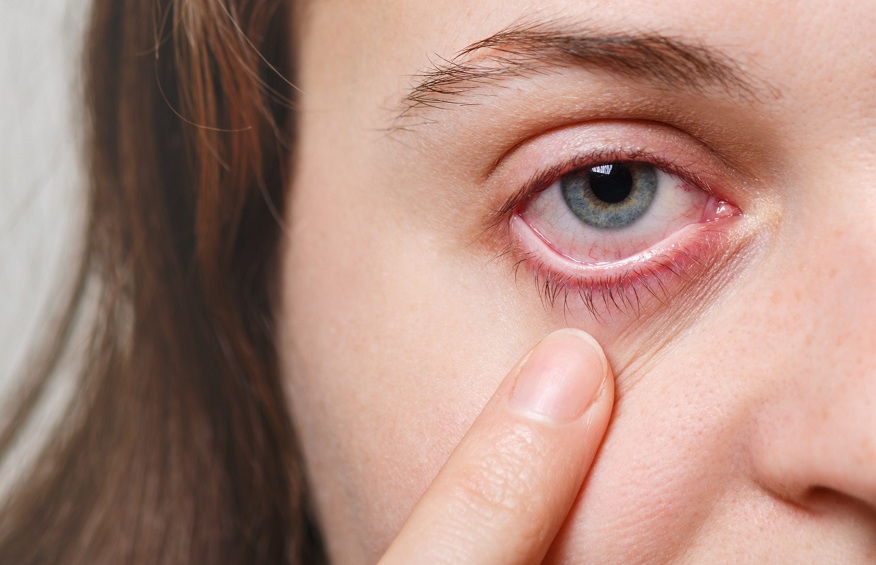Cataract
Cataract is an eye disease most often occurring around the age of 60 and affecting nearly one in five people aged 65 and over. It is distinguished by lens clouding, which obstructs light from reaching the retina and results in hazy vision.
This vision disorder which affects seniors generally leads to increased sensitivity to light, a reduction in the perception of contrasts, the appearance of luminous halos, a reduction in visual acuity and also a difficulty in understanding relief and light. feeling as though something is covering your eyes.
Cataracts are essentially due to the natural ageing of the eye. However, smoking, certain diseases such as diabetes, high myopia but also high alcohol consumption and sunlight can constitute risk factors. Trauma to the eyes can also contribute to the appearance of this vision disorder in seniors.
Cataract is one of the most common eye diseases in people. It is treated through outpatient surgery ( the operated person can return home the same day) under local anaesthesia. The surgeon removes the lens nucleus and replaces it with an intraocular implant.
AMD, age-related macular degeneration
Age-related macular degeneration is an eye disease that affects more than 11% of the world population and one in ten people between 65 and 75 years old.
It affects the central area of the retina, the macula, which is subject to premature ageing.
AMD comes in two forms, dry (or atrophic) AMD and wet (or exudative) AMD. In the first case, which concerns the majority of patients, the disease progresses over several years. The macula atrophies over time and deposits form in the retina, leading to a gradual loss of central vision. In its wet form, which is more serious and sometimes constitutes the second stage of the disease, AMD causes the formation of blood vessels. These vessels suddenly accelerate the loss of central vision and can precipitate disability.
In terms of symptoms, people suffering from AMD are at risk of several types of vision problems. Undulation of straight lines, difficulty perceiving colors and contrasts, impaired vision in the dark or even the appearance of dark spots in the field of vision can all be manifestations of this eye disease which affects sseniors Over time, completing daily tasks becomes difficult. Age, smoking and hereditary factors can contribute to the occurrence of the disease.
Dry AMD cannot be treated; only the wet form can be the subject of drug treatment to limit the development of new vessels (antiangiogenic treatment) or obstruct them to limit their development (dynamic phototherapy).
Presbyopia
Presbyopia is a common vision defect that appears around the age of 40.
This vision disorder is due to a loss of flexibility of the lens linked to advancing age. In practice, the lens is no longer able to naturally adapt its shape so that the eye can move from distance vision to near vision. People suffering from this accommodation difficulty often have to hold objects and documents out at arm’s length in order to see them better and be able to read correctly. Discomfort tends to occur when tired or in dim lighting.
Note that people prone to hyperopia or astigmatia are often affected earlier by this vision disorder.
Presbyopia is often treated by prescribing glasses equipped with progressive lenses or lenses. These particular lenses are “divided” in two and allow you to see far away thanks to the upper part and to see up close thanks to the lower part. In some cases, refractive eye surgery may be prescribed. It allows you to modify the curvature of the cornea and create two zones of vision, similar to what progressive lenses allow. The placement of implants, as in cataract surgery, constitutes a second surgical option.
Glaucoma
This eye disease is manifested by a significant increase in pressure inside the eye. This pressure is due to damage to the optic nerve; it causes vision problems in seniors which gradually reduces the visual field.
There are open-angle glaucoma and closed-angle glaucoma. The first, which concerns more than 80% of cases, is characterized by an accumulation of aqueous humour in the eye. The illness in the second case is brought on by an ocular deformity. In terms of symptoms, open-angle glaucoma is a disease that is often insidious and can be asymptomatic for several years. Unusual pain felt in the eyes, a decrease in visual acuity, and a deterioration in peripheral vision are warning signs. In narrow-angle glaucoma, eye strain is often sudden.
Currently, glaucoma cannot be cured, but it is possible to prevent its progression. The prescription of eye drops, laser intervention and, as a last resort, surgery can be considered.
Ageing of the eye is inevitable. As a senior, you should pay particular attention to the health of your eyes by making regular appointments with an ophthalmologist from JL Rohatgi Hospital, once a year for example.

